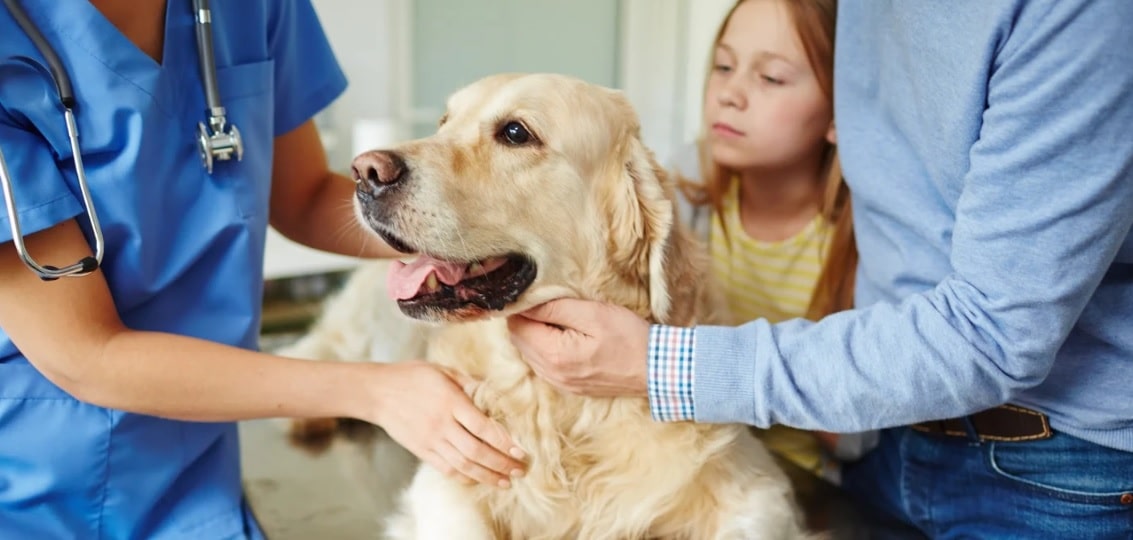What you should do if you find a lump on your pet
Finding a lump or bump on your pet can be frightening. Most people immediately think of cancer, but that is not always the case. If your pet has a lump, follow these steps:
- Don’t panic. We understand it’s scary to find a lump on your pet, but stay calm and don’t automatically assume the worst. A significant number of the many masses found on pets are benign rather than cancerous.
- Measure the size. Once you’ve identified a mass, watch its growth. If a mass is growing, surgical removal is often recommended, based on how fast it is growing, the location of the mass, the health of the patient, etc. However, we always recommend having lumps and bumps evaluated by your primary veterinarian as soon as they are identified.
- Pinpoint the location. Especially in long-coated pets, finding a small mass again following the initial discovery may be difficult. Take a picture, make a detailed description of the location, or carefully shave the area around the lump so it is easily identifiable during an exam.
- Schedule an appointment. Catching a malignant lump in the early stages is often crucial for your pet’s prognosis. Schedule an exam with your primary veterinarian so she can identify the lump.
- Monitor your pet’s habits. Take note whether the lump bothers your pet. Is she scratching it? Does it seem painful? Does it ooze or bleed? Is your pet eating, drinking, and acting normally?
Common masses found on pets
Benign tumors
- Lipomas are the most common masses found on pets. These “fatty tumors” are almost always benign growths, and are usually just under the skin. They remain relatively mobile (skin moves around them freely) unless they invade local muscle and connective tissue. They are generally soft growths, but may become firm if they grow under a muscle layer. Lipomas are usually left alone, except for monitoring their growth. If they grow quickly, or they are located where they may restrict normal range of motion, such as behind an elbow, surgical removal may be recommended.
- Histiocytomas are an abnormal growth of immune cells in the skin, and are often seen on young dogs. These masses can look angry, because of their bright red color and “bubbled” surface. They often appear overnight and sometimes will disappear without treatment. Some dogs may chew or bump these masses and make them bleed. If the tumor does not resolve itself or is bothering your pet, surgical removal may be recommended after speaking with your veterinarian.
- Skin tags or cysts are generally benign, unless they grow large. Dangling skin tags can get caught, bleed, and cause pain, while cysts can rupture and ooze. Generally for these types of masses, at-home monitoring is the only treatment necessary, however, if your pet becomes uncomfortable, surgical removal may be recommended by your veterinarian.
Malignant tumors
- Encompass a wide category of masses, including mammary tumors, squamous cell carcinomas, osteosarcomas, mast cell tumors, and lymphoma. A thorough physical exam with diagnostic testing is necessary to determine the tumor type.
Diagnosing masses found on pets
When a suspicious mass is found, several diagnostic tests may be performed, such as:
- Fine needle aspirate — Using a small needle, cells are pulled from the mass into a syringe and examined under a microscope by a pathologist.
- Biopsy — This diagnostic test requires sedation or anesthesia to remove a portion or the entire mass, which is sent to an outside laboratory for identification.
- X-rays — If your pet has an unknown mass, X-rays of the chest and occasionally the abdomen might be performed to check for metastasis(the spread of cancer cells to another part of the body).
- Ultrasound — In some situations, an ultrasound can provide more information than X-rays and give a clearer picture of the size of an internal mass and how it is affecting nearby organs.
- Blood work — Blood samples are often assessed to see if the mass has an infective component, is making your pet anemic, or is affecting organ function.
Did you discover a lump on your pet?
Don’t delay—schedule an appointment with your veterinarian today to get it checked. If you need a referral to a veterinary oncologist, AVES is here to assist you!
Latest posts by Austin Veterinary Team (see all)
- Management of Prolonged Starvation in a Cat –by Amaris Franco, DVM, DACVECC - June 13, 2024
- Canine Heat Stroke – by Jami Becker, DVM, DACVECC - May 20, 2024
- Bacterial Meningitis – by Tracy Sutton, DVM, DACVIM - January 29, 2024


